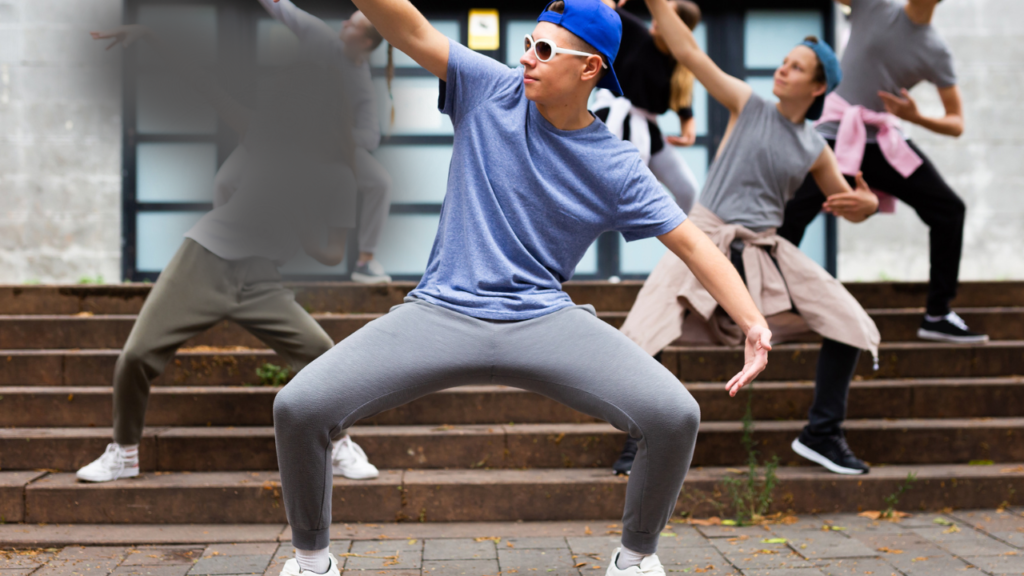Can we dance in Islam?
"Navigating the Complex Relationship Between Dance, Faith, and Culture in Islam"

Can we dance in Islam?
Dancing in Islam is a subject of debate among scholars. Some consider it permissible in certain contexts, while others view it as haram (forbidden). It depends on the type of dance, the environment, and the intentions behind it.

Introduction
Dance is a universal form of human expression, a rhythmic and artistic movement that transcends boundaries, cultures, and religions. In the context of Islam, the question of whether or not dancing is permissible often arises. Like many religious traditions, Islam encompasses a wide range of cultural practices and interpretations, making it important to explore the diverse perspectives on dance within the Muslim community. In this article, we will delve into the complex relationship between Islam and dance, examining the various viewpoints and contexts that surround this topic.
The Diversity of Islamic Perspectives
Islam is a global religion with a rich tapestry of cultural diversity. As a result, there is no single, universally accepted stance on dancing within the Islamic faith. The permissibility of dance is influenced by a multitude of factors, including cultural norms, regional customs, and individual interpretations of religious texts. To better understand this diversity, let’s explore some of the key perspectives on dance within Islam.
- Cultural Variations: Islamic practice varies significantly from one region to another. In some Muslim-majority countries, dance is an integral part of cultural celebrations and social gatherings. For example, the whirling dervishes of Turkey perform the Sufi dance, known as the “Sama,” as a form of spiritual expression. Similarly, various forms of folk dance are prevalent in different parts of the Muslim world.
- Sufi Mysticism: Sufism is a mystical branch of Islam that emphasizes spiritual introspection and closeness to God. In Sufi traditions, dance is often used as a means of achieving spiritual ecstasy and communion with the Divine. The aforementioned Sufi whirling dance is a prime example of this practice. Sufi orders like the Mevlevis use dance as a form of worship.
- Conservative Interpretations: Some conservative interpretations of Islam discourage or prohibit dancing. This perspective is rooted in the belief that dancing can be immodest or lead to sinful behavior. In such interpretations, any form of dance that involves mixed genders or sensual movements may be considered haram (forbidden).
- Gender-Segregated Dancing: In some Muslim communities, dance is permitted but must adhere to strict gender segregation. In these cases, men and women may engage in separate dance activities at weddings or other celebrations. This approach aims to maintain modesty and prevent any inappropriate interactions.
- Moderation and Intention: Many Muslims believe that the permissibility of dance depends on the individual’s intentions and the context in which it occurs. If the dance is performed in a respectful and modest manner, for cultural or recreational purposes, and does not lead to sinful behavior, it may be seen as acceptable.
Understanding the Role of Intention
One of the central principles in Islam is the concept of intention (niyyah). This principle suggests that the moral value of an action depends on the intention behind it. This means that if an individual engages in dance with the intention of celebrating a joyous occasion or expressing their cultural identity, and it does not lead to sinful behavior, it may be considered permissible by many scholars.
However, it is essential to exercise caution and ensure that dance does not violate any core Islamic principles, such as modesty, decency, or the prohibition of sinful activities. Muslims are encouraged to maintain a balance between their cultural expressions and their religious values.
Also Check
- Who is Hazrat Ibrahim (AS) in Islam?
- Who were the grandsons of Prophet Muhammad?
- Where are the 25 Prophets of Islam in order?
- Why do Muslims cover their face?
- How are Muslims buried?
Conclusion
The permissibility of dance in Islam is a multifaceted and nuanced issue. It is influenced by cultural context, regional customs, individual interpretations, and the intentions of those who engage in dance. While some conservative interpretations discourage dancing, others embrace it as a form of cultural expression and even spiritual connection with the Divine.
Ultimately, whether or not one can dance in Islam depends on their individual beliefs, the specific context, and their adherence to Islamic principles. It is essential for Muslims to approach the topic of dance with sensitivity, respect for their faith, and an understanding of the diverse perspectives within the Muslim community.

FAQs about Dancing in Islam
Is dancing allowed in Islam?
Dancing in Islam is a subject of debate among scholars. Some consider it permissible in certain contexts, while others view it as haram (forbidden). It depends on the type of dance, the environment, and the intentions behind it.
What types of dancing are generally considered permissible in Islam?
Generally, simple and modest forms of dancing that do not involve suggestive or provocative movements are considered more acceptable. Folk dances, traditional cultural dances, and celebratory dances at weddings and festivals are often allowed.
Are there any specific guidelines for permissible dancing in Islam?
Islamic guidelines for permissible dancing include maintaining modesty in dress, avoiding mixed-gender gatherings, and ensuring that the content and movements of the dance do not violate Islamic values or principles.
Is it allowed to dance in front of a non-mahram (unrelated) person of the opposite sex?
In Islam, it is generally discouraged to dance in front of unrelated individuals of the opposite sex. Modesty and avoiding potential temptations are important considerations.
Can Muslims dance at weddings and other celebrations?
Dancing at weddings and other celebrations is a common practice in many Muslim cultures. However, it should be done with modesty, avoiding inappropriate movements or mixed-gender dancing.
Is dance permissible in Sufi Islamic traditions?
Sufi orders often incorporate dance as a form of worship and spiritual expression, known as “Sufi whirling” or “dervish dancing.” It is considered permissible within certain Sufi traditions as a means of seeking closeness to Allah.
Can dance be used as a form of exercise or fitness for Muslims?
Engaging in dance for the purpose of exercise or physical fitness is generally considered permissible as long as it is done in a private and modest setting, adhering to Islamic guidelines for dress and behavior.
What types of dancing are strictly prohibited in Islam?
Any form of dancing that involves lewd or sexually suggestive movements, promotes sinful behavior, or goes against Islamic values, such as club dancing or provocative dancing, is generally considered haram (forbidden).
Are there cultural variations in the permissibility of dancing in Islam?
Yes, the permissibility of dancing can vary among different Muslim cultures and communities. Some may be more lenient, while others may have stricter interpretations based on their cultural norms and religious practices.
What should a Muslim consider before engaging in dance?
efore dancing, a Muslim should consider the context, type of dance, the presence of unrelated individuals of the opposite sex, the intention behind the dance, and whether it aligns with Islamic principles of modesty and righteousness. Consulting with a knowledgeable Islamic scholar can provide specific guidance in individual cases.






